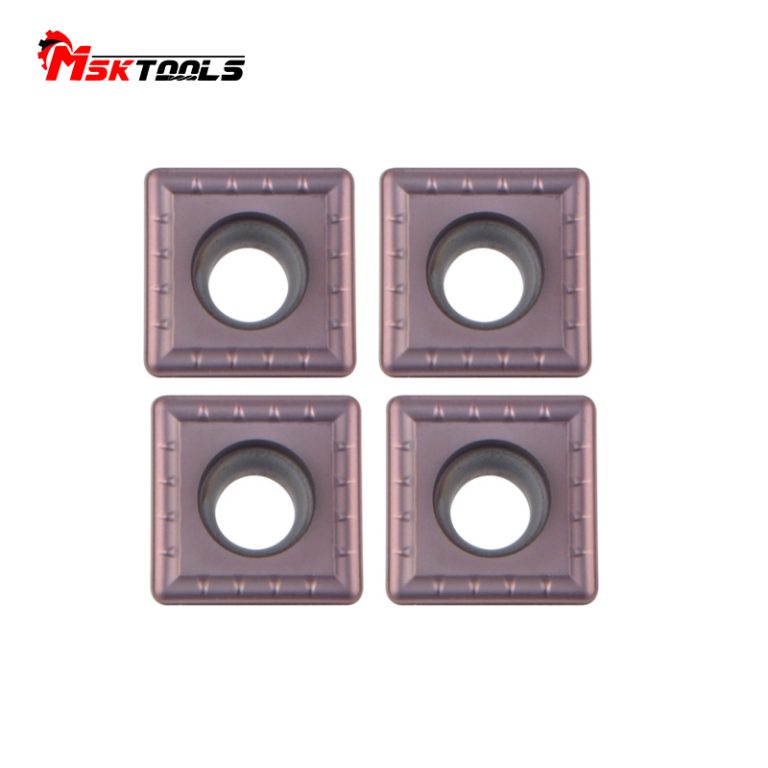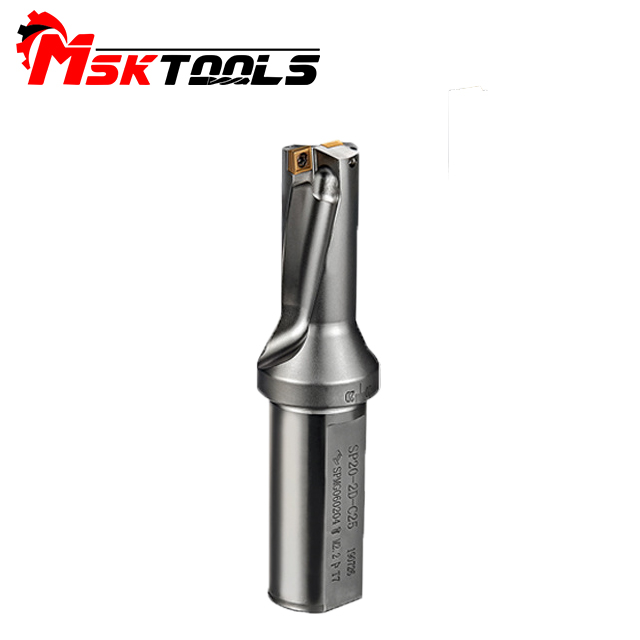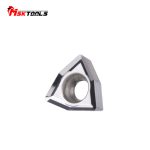Need help finding the best drill insert for your project? This guide provides all the necessary information to ensure you make the right choice. Learn how to evaluate various drill insert options, weigh the pros and cons, and decide which type of drill insert is best for your purpose. With the right help, you can ensure your project’s success through a well-chosen drill insert.
Making the Right Choice of Drill Inserts: Tips for Selecting the Optimal One.

Selecting the right drill insert is critical for successful drilling projects in tough materials. With so many options available in the market, it can be challenging to choose the ideal one. In this article, we focus on how to pick the most suited drill insert while making an informed decision. Here are some of the factors you should consider when selecting a drill insert for your project.
Grasp the intricacies of drilling materials to ensure optimal outcomes. It’s imperative to be aware of the properties, applications, and uses of applicable drilling materials in order to be successful.
The selection procedure requires one to accurately identify the material that you are drilling. It is essential to understand that distinct materials call for different drill inserts given that they each have a unique set of traits. As an example, if you are going to drill through wood, you would need a different type of insert compared to when drilling through either metal or concrete. Reviewing the material you will be drilling is the key to establishing the perfectly suited insert material, surface coating, and design.
It is paramount to always take into account the aspects of the material being added.
If you’re looking for a way to successfully drill various materials, drill inserts are an ideal solution. You can opt for inserts made from high-speed steel (HSS) for softer materials, cobalt for harder materials such as stainless steel, carbide for drilling in tough materials at high speeds, or diamond-coated inserts for abrasive surfaces. Each material type comes with its own set of advantages and characteristics.
Assess the Coating – Analyze the material with which you are working to decide if it is well-suited for your purpose. Analyze its effectiveness, longevity, and quality. Consider if the coating provides what you need to get the job done.
Drill inserts with specialized coatings can enhance performance and generate extended tool life. Coatings such as titanium nitride (TiN), titanium aluminum nitride (TiAlN) and black oxide provide much needed protection against both friction and heat build-up while drilling. TiN works well in general-purpose drilling tasks while TiAlN offers better cutting speeds. Black oxide aims to keep heat generation to a minimum. To ensure the right coating is chosen, considering the material being drilled is key.
Open the Insert Design menu and pick the best option for you.
When selecting a drill insert for a certain job, the design determines various factors, such as chip formation, cutting forces, and performance outcome. Generally, three designs stand out: twist inserts (versatile for various projects), indexable (possess multiple cutting edges for convenience), and spade (best for material removal). Assess what you need for the job – material, and results – and pick the insert with the closest properties.
Understanding the dimensions of your chosen product is imperative. While researching, take a look at the size and form to see if it will fit into your desired area in your space.
To ensure maximum performance and longevity of your drilling operations, it is essential to select the ideal size and shape of the drill insert. The dimension of the insert is determined by the diameter and length, with the right size helping you achieve an effective hole drilling without putting excessive pressure on the material or insert. Furthermore, depending on your drilling needs, select a flat, rounded or pointed tip – a rounded tip provides optimal stability while a pointed one delivers precise hole drilling.

It is crucial to select the correct drill insert if you want to achieve efficient and precise drilling outcomes. Make sure you examine the material, assess the shape and size, take into consideration the insert material as well as coating, then you can make an educated decision that suits your particular project demands. We suggest investing in a drill insert of premium quality for maximum durability and performance in the long-term. Therefore, take your time, do complete research before making your final purchase decision, and if need be, seek advice from experts to ensure that you invest in the suitable drill insert for your requirements. We hope your drilling turns out great!
Uncover the Essential Guide: Picking the Right Drill Insert
If you are tackling a construction or DIY project, drilling is a must. The right drill insert can make all the difference. Since there are numerous types available, it can be difficult to determine the best choice for professional and novice users. That’s why we’ve created this comprehensive guide to assist you in selecting the ideal drill insert for your project, providing you with all the information needed for a wise decision.
It is imperative to ensure the appropriate fit between your components and materials. The compatibility of the components you use should never be taken lightly as it is integral to the successful functioning of your system. Choosing materials that are not suitable can leave you with an inefficient system, so care must be taken when selecting the right fit.
When you’re deciding on a drill insert, one of the most important traits to consider is how well it matches the surface you’re drilling into. Depending on the material you select, a distinct type of drill insert should be employed in order to secure maximum performance. For instance, if wood is the object of your drilling project, alloy steel or carbon steel would make suitable options. However, tougher materials such as metal or concrete demand harder bits like carbide tungsten tips for extra resistance and sturdiness.
To ensure successful results, the type of shank must carefully be selected and followed. It’s essential to consider the variety of materials, sizes and shapes available for each particular application. The right choice can make a significant difference to end results.
When selecting a drill insert, another important factor to consider is the shank type. There are two kinds: straight and tapered. Straight shanks are suitable for most drilling jobs, as they conveniently fit into drill chucks. However, tapered shanks are specifically designed to match with your taper socket drilling machine. Obviously, it is essential that you choose the right shank type to guarantee that your drill insert is properly connected to your drilling machine.
It’s essential to ascertain the size and diameter in any given instance. It is necessary to measure carefully for accurate results. Failure to do this could lead to incorrect outcomes. Therefore, individuals must ensure that the correct size and diameter are being assessed when needed.
The success of any drilling job is dependent on the correct choice of drill inserts. To ensure you get accurate outcomes, it’s important to assess the size and diameter required for your task or application. Typically, if you need to perform heavy-duty drilling then a larger drill insert should be used, however if precision is needed in the task then a smaller one should be considered. Therefore, take into account the scale of your drilling job when selecting a drill insert as this will make sure that you find the most suitable one for your needs.

Coating is a process of covering an object with a layer of protective material, which results in a more durable, attractive and even surface. This can be done for various purposes such as protection from outside elements, decoration, or adding functionality to an object. Different coating processes are used based on the size, shape and composition of the material that is being modified. So if you need a finishing touch for an object, coating could be the answer!
When it comes to drill inserts, the material they are coated with makes all the difference. That’s why titanium nitride (TiN), titanium carbonitride (TiCN), and aluminum titanium nitride (AlTiN) coatings are frequently chosen. With a specialized coating, you can enjoy enhanced durability, reduced friction and improved overall performance from your drill insert. To ensure you get the most out of your drill insert, make sure to consider the material coating for maximum performance longevity and optimal drilling results.
To ensure the best possible outcome and customer experience, brands must prioritize quality in their products. By cultivating a reputation for dependability, reliability, and trustworthiness, brands can successfully establish successful customer relationships. Consequently, achieving customer loyalty will become effortless as customers recognize a standard of excellence has been set.
A prudent decision when investing in a drill insert is to select a reputable brand. Trusted brands often come with thorough research and development to ensure a reliable product. An advantage of buying high-caliber drill inserts is that they are reliable sources for successful results which also last longer due to their durability. It pays off to invest in reputable brands in the long run as it saves one time, effort and money.
When deciding upon the ultimate drill insert, don’t be hasty. Your drilling projects’ success depends on the total combination of factors present, such as material suitability, shank type, size, coating, and brand excellence. Deciding carefully will promise a tremendous improvement of your accuracy and speed in drilling precision; thus allowing for an easy execution of any task. So gear up with what’s best for you and get out there to explore a world of drilling!













